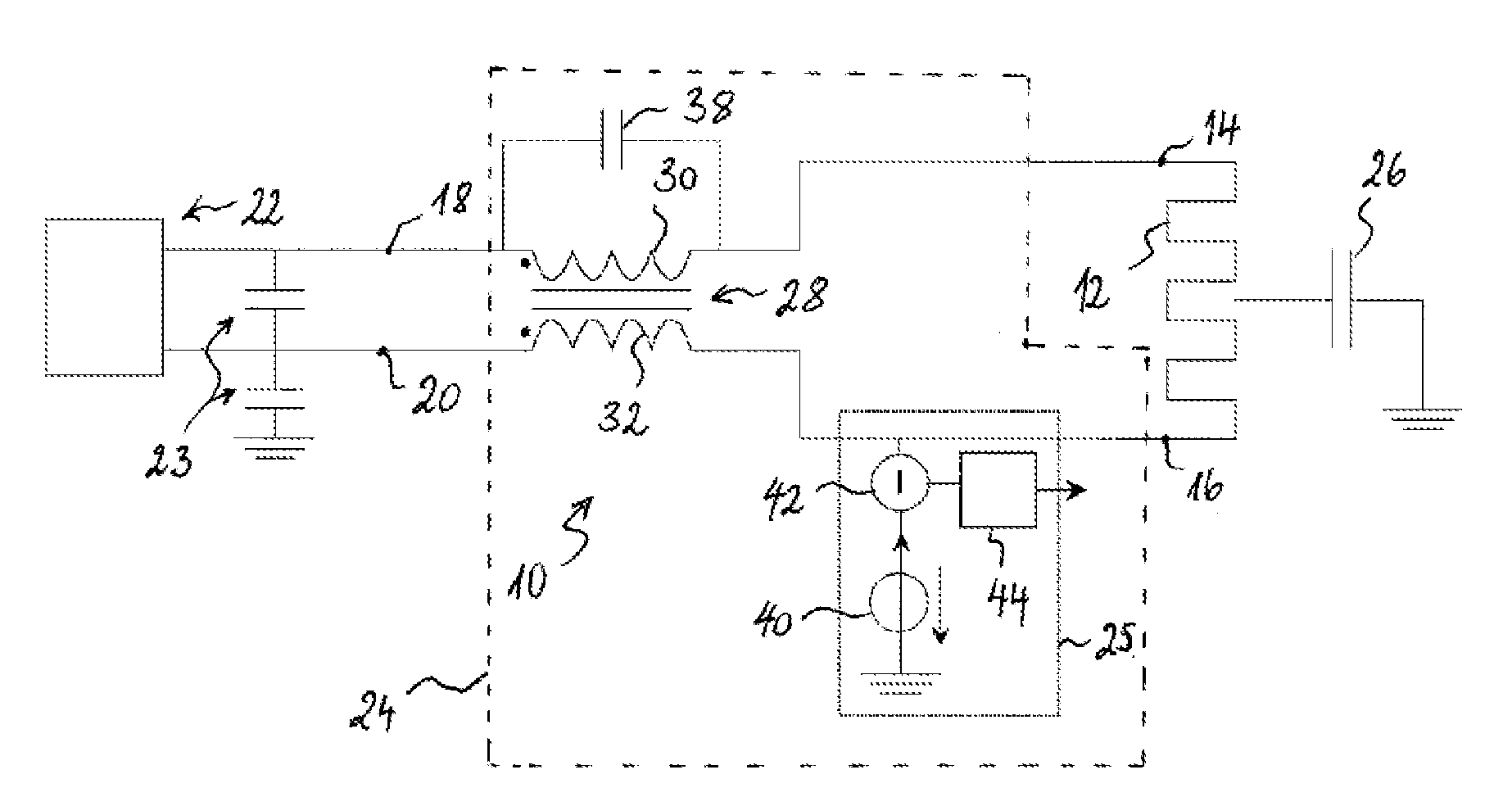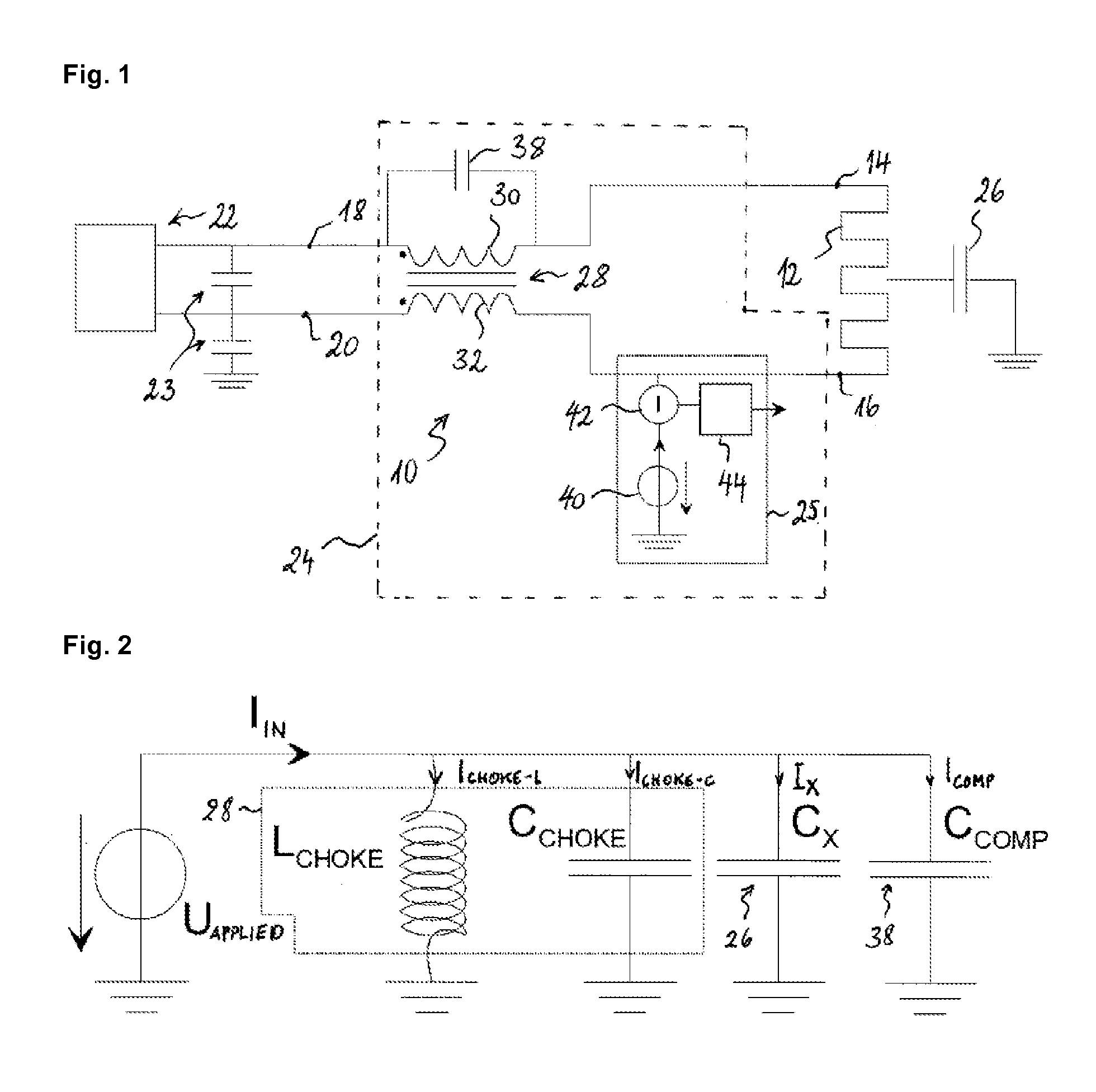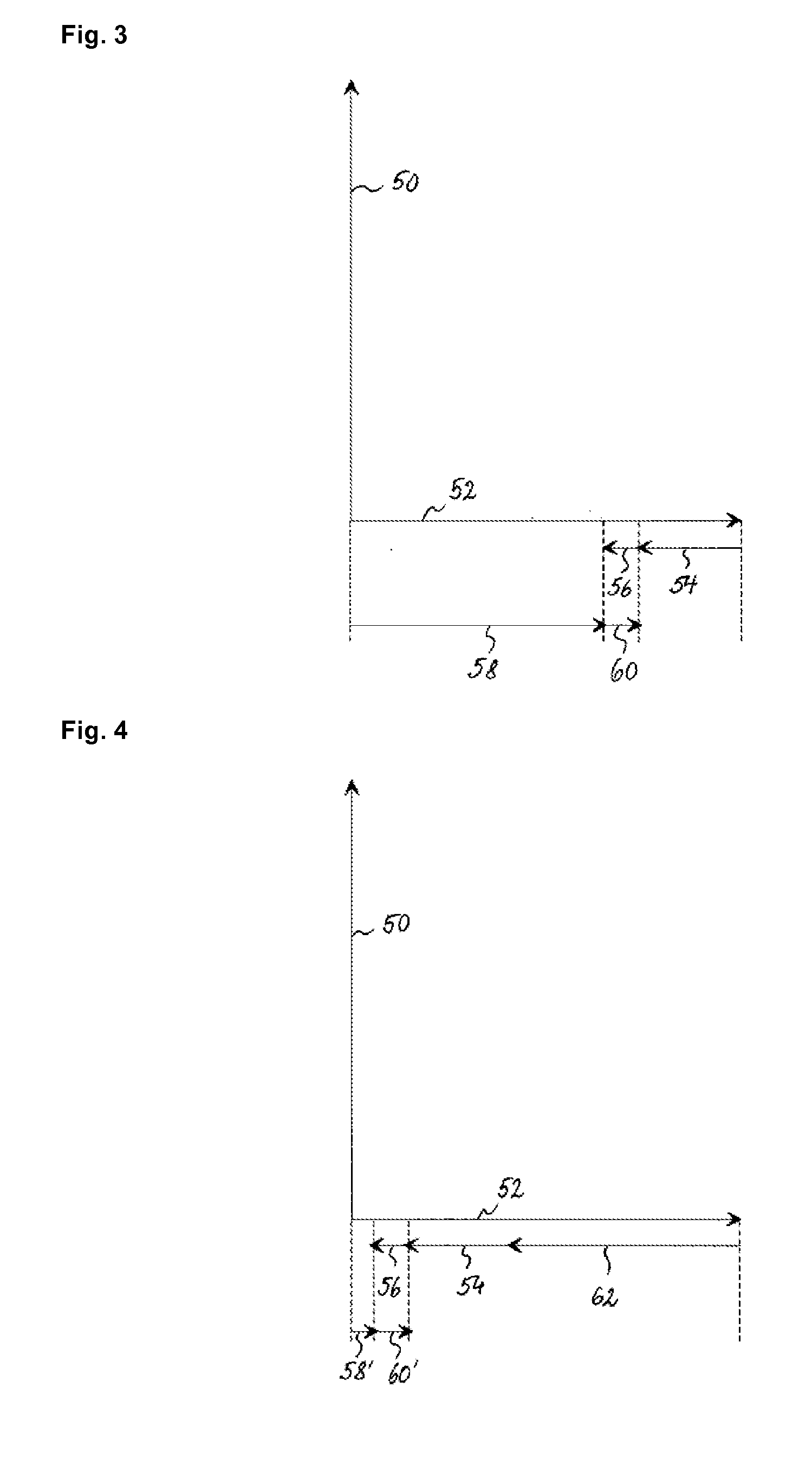Capacitive sensing system configured for using heating element as antenna electrode
a capacitive sensing and heating element technology, applied in the direction of instruments, pedestrian/occupant safety arrangements, vehicular safety arrangements, etc., can solve problems such as measurement resolution problems, and achieve the effect of convenient connection
- Summary
- Abstract
- Description
- Claims
- Application Information
AI Technical Summary
Benefits of technology
Problems solved by technology
Method used
Image
Examples
Embodiment Construction
[0028]In the following, it will be assumed that the heating current is direct current (DC) and that the capacitive measurement uses alternating current (AC) at a certain frequency. This is insofar a simplification that transient states (e.g. switching on / or off of the heating current), noise and parasitic currents are not taken into account. It should also be noted that the heating current need not be direct current in the strictest sense: it may be variable, but on a long time-scale, so as not to interfere with the current used for the capacitive measurement. For sake of simplicity, we will use “DC” to designate slowly varying or constant signals. The capacitance measurement network preferably operates at frequency selected in the range from about 50 kHz to about 10 GHz, more preferably in the range from about 50 kHz to about 30 MHz.
[0029]FIG. 1 shows a combined heating and capacitive sensing system 10 according to a preferred embodiment of the invention. The combined system 10 com...
PUM
 Login to View More
Login to View More Abstract
Description
Claims
Application Information
 Login to View More
Login to View More - R&D
- Intellectual Property
- Life Sciences
- Materials
- Tech Scout
- Unparalleled Data Quality
- Higher Quality Content
- 60% Fewer Hallucinations
Browse by: Latest US Patents, China's latest patents, Technical Efficacy Thesaurus, Application Domain, Technology Topic, Popular Technical Reports.
© 2025 PatSnap. All rights reserved.Legal|Privacy policy|Modern Slavery Act Transparency Statement|Sitemap|About US| Contact US: help@patsnap.com



